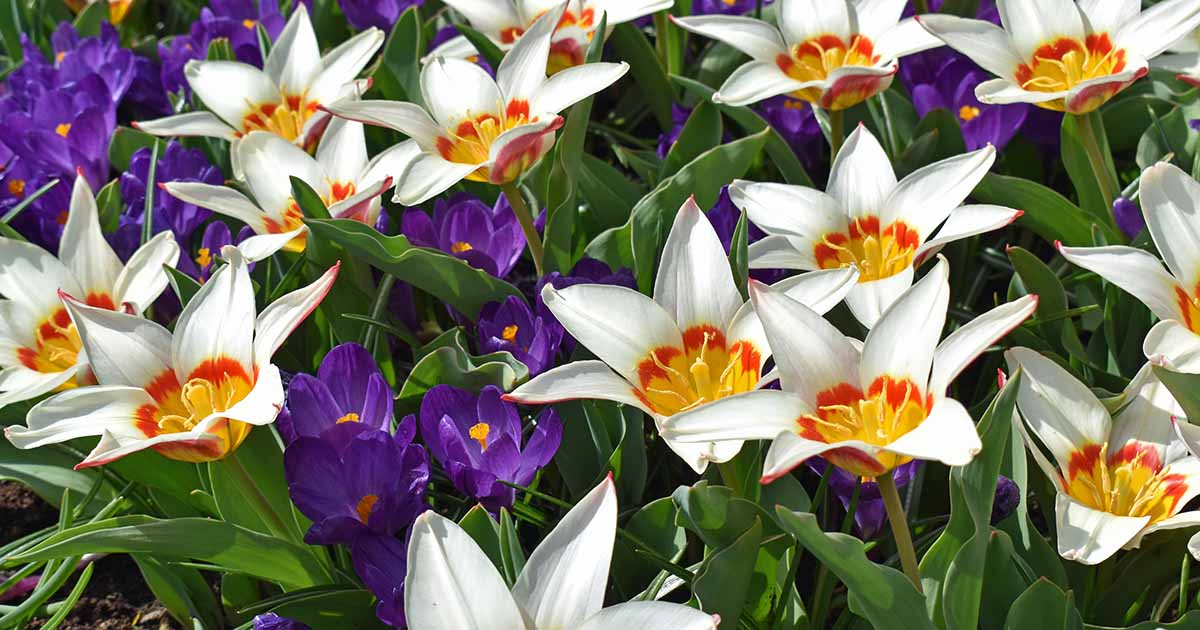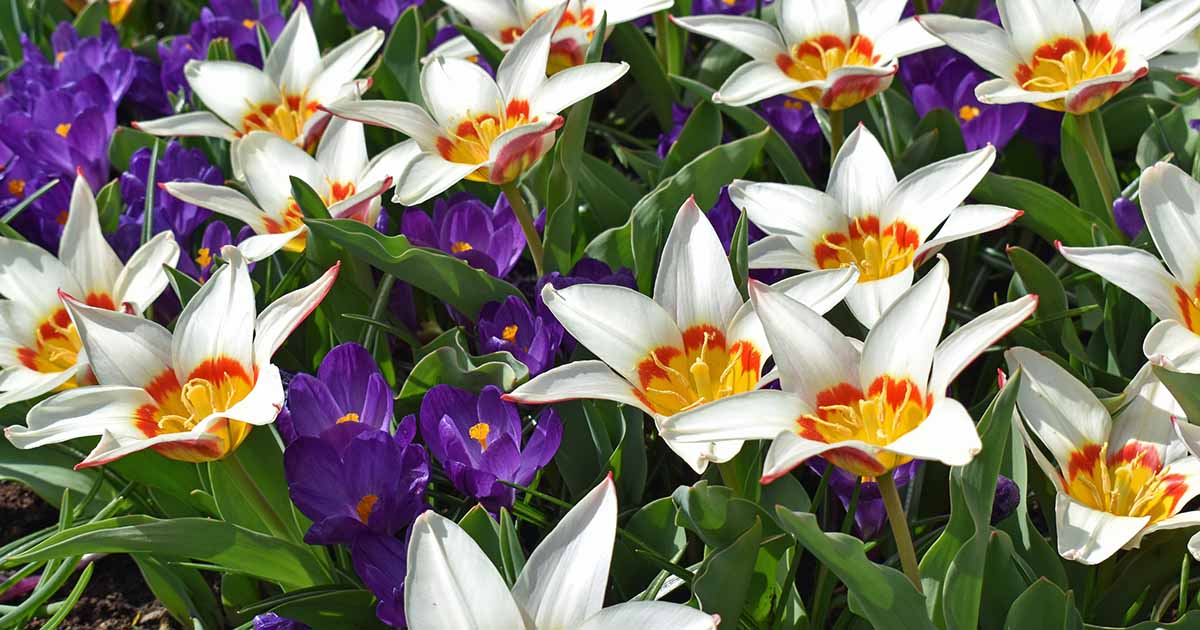How To Naturalize Spring Flowering Bulbs By Planting Them In Fall: Imagine a garden awash in vibrant colors, bursting with life as the first signs of spring emerge. This enchanting spectacle can be yours with the simple act of planting bulbs in the fall.
By taking advantage of the cooler temperatures and dormant period, you can set the stage for a dazzling display of spring blooms that will bring joy to your landscape for years to come.
Naturalizing bulbs involves strategically planting them in your garden to create a natural, free-flowing effect. This technique allows bulbs to multiply over time, spreading their beauty throughout your landscape. The process is surprisingly simple, requiring only a few essential steps to ensure success.
Choosing the Right Bulbs
Selecting the right bulbs for your fall planting is crucial for a vibrant spring display. Consider factors like bloom time, color, and growth habits to create a beautiful and harmonious garden.
Bloom Time
The timing of your bulbs’ bloom is important for creating a continuous display of color throughout the spring. Early bloomers like snowdrops and crocuses emerge in late winter, while later bloomers like tulips and lilies appear in mid-to-late spring.
- Early Bloomers:Snowdrops, crocuses, winter aconite, grape hyacinths, and Siberian squill.
- Mid-Bloomers:Daffodils, hyacinths, fritillaries, and allium.
- Late Bloomers:Tulips, lilies, irises, and peonies.
Color
Choose bulbs in colors that complement your existing garden or create a specific theme. Consider the color wheel and create harmonious color combinations, such as warm hues like red and orange, or cool tones like blue and purple.
Growth Habits, How To Naturalize Spring Flowering Bulbs By Planting Them In Fall
Each bulb has unique growth habits, affecting its height, spread, and overall appearance.
Naturalizing spring flowering bulbs in the fall is a rewarding practice, creating a vibrant tapestry of color in your garden come spring. The process is similar to the meticulous art of Bonsai , where patience and careful planning are essential to achieving a stunning visual impact.
Just as a bonsai artist nurtures a miniature tree, you’ll be nurturing a future bloom, ensuring a beautiful display of color and fragrance when the time is right.
- Tall Bulbs:Tulips, lilies, and irises can reach heights of 2-3 feet or more, creating vertical accents in the garden.
- Medium Bulbs:Daffodils, hyacinths, and fritillaries typically grow 1-2 feet tall, adding a balance of height and spread.
- Low-Growing Bulbs:Snowdrops, crocuses, and grape hyacinths remain close to the ground, providing a beautiful groundcover effect.
Popular Spring-Flowering Bulbs
- Daffodils:Known for their cheerful yellow flowers, daffodils are hardy and easy to grow. They come in a wide range of colors, including white, orange, and pink.
- Tulips:Tulips are a classic spring flower, available in an incredible variety of colors, shapes, and sizes.
- Hyacinths:These bulbs produce fragrant, bell-shaped flowers in a range of colors, from deep purple to soft pink.
- Allium:Allium bulbs produce large, spherical flower heads that attract pollinators. They come in shades of purple, pink, and white.
- Crocuses:Crocuses are among the first flowers to bloom in spring, offering a splash of color in late winter. They come in shades of purple, yellow, and white.
Preparing the Planting Site
Preparing the planting site for your spring-flowering bulbs is crucial for their successful growth and blooming. By providing the right conditions, you can ensure healthy bulbs that thrive and produce vibrant displays of color in the spring.
Soil Conditions for Bulb Planting
The ideal soil for bulb planting is well-drained, fertile, and slightly acidic. This type of soil allows for good drainage, preventing the bulbs from rotting, while also providing the nutrients necessary for healthy growth.
Amending Soil for Optimal Growth
If your soil doesn’t meet these ideal conditions, you can amend it to create a more favorable environment for your bulbs. Here are some tips for amending your soil:* Improve drainage:If your soil is heavy clay, add organic matter such as compost, peat moss, or aged bark.
This will help improve drainage and aeration.
Increase fertility
Add a balanced fertilizer or compost to the soil to provide essential nutrients for the bulbs.
Adjust pH
If your soil is too alkaline, you can lower the pH by adding sulfur or peat moss.
Soil Types and Suitability for Bulb Planting
Here is a table comparing different soil types and their suitability for bulb planting:| Soil Type | Drainage | Fertility | Suitability for Bulbs ||—|—|—|—|| Sandy | Excellent | Low | Good, but may require additional fertilizer || Loamy | Good | Moderate | Ideal for most bulbs || Clay | Poor | High | Requires amending to improve drainage || Peat | Excellent | Low | Good for acid-loving bulbs, but may require additional nutrients |
Planting Techniques: How To Naturalize Spring Flowering Bulbs By Planting Them In Fall

Planting spring-flowering bulbs in the fall is a straightforward process that involves placing the bulbs in the ground at the correct depth and spacing. This ensures they have enough time to develop roots before the cold weather sets in, preparing them for a vibrant display of blooms in the spring.
Planting Depth
The depth at which you plant bulbs depends on the size of the bulb. A general rule of thumb is to plant bulbs twice as deep as their height.
For example, a bulb that is 2 inches tall should be planted 4 inches deep.
- Small bulbs:These include grape hyacinths, crocuses, and snowdrops. They should be planted 2-3 inches deep.
- Medium bulbs:These include tulips, daffodils, and hyacinths. They should be planted 4-6 inches deep.
- Large bulbs:These include lilies and allium. They should be planted 6-8 inches deep.
Spacing Bulbs
Proper spacing ensures that the bulbs have enough room to grow and develop strong roots. This also helps to prevent overcrowding, which can lead to smaller blooms and a less impressive display.
- Small bulbs:Space these bulbs 2-3 inches apart.
- Medium bulbs:Space these bulbs 4-6 inches apart.
- Large bulbs:Space these bulbs 6-8 inches apart.
Planting Bulbs
Here is a step-by-step guide on planting bulbs in the fall:
- Prepare the planting site:Ensure the soil is well-drained and amend it with compost if necessary. This will provide the bulbs with the nutrients they need to thrive.
- Dig planting holes:Use a trowel or bulb planter to dig holes to the appropriate depth for the type of bulb you are planting.
- Place the bulbs in the holes:Make sure the pointed end of the bulb faces upwards. If you are planting multiple bulbs, space them according to the recommended spacing for their type.
- Backfill the holes:Gently fill the holes with soil, making sure to cover the bulbs completely.
- Water thoroughly:Water the bulbs well after planting to help them settle in and establish roots.
- Add mulch:After planting, apply a layer of mulch, such as shredded bark or wood chips, to help retain moisture and protect the bulbs from harsh weather conditions.
Closing Notes
Planting bulbs in the fall is a rewarding experience that promises a breathtaking spring spectacle. By selecting the right bulbs, preparing the soil, and following proper planting techniques, you can create a captivating garden that will enchant you for years to come.
So, embrace the beauty of fall planting and let your garden bloom with vibrant life as the first signs of spring emerge.
FAQ Summary
How long does it take for bulbs to bloom after planting?
The blooming time for bulbs varies depending on the variety. Some bulbs, like tulips and daffodils, may bloom within a few weeks of the first signs of spring, while others, like hyacinths, may take a little longer. It’s always a good idea to check the specific blooming period for the bulbs you are planting.
Can I plant bulbs in containers?
Yes, you can plant bulbs in containers. Choose a container with drainage holes and fill it with a well-draining potting mix. Plant the bulbs according to the recommended depth and spacing for the particular variety.
What should I do if my bulbs don’t bloom?
If your bulbs don’t bloom, there could be several reasons. Check if they were planted at the correct depth, ensure the soil is well-draining, and make sure they are getting enough sunlight. It’s also important to rule out any pests or diseases that might be affecting the bulbs.
